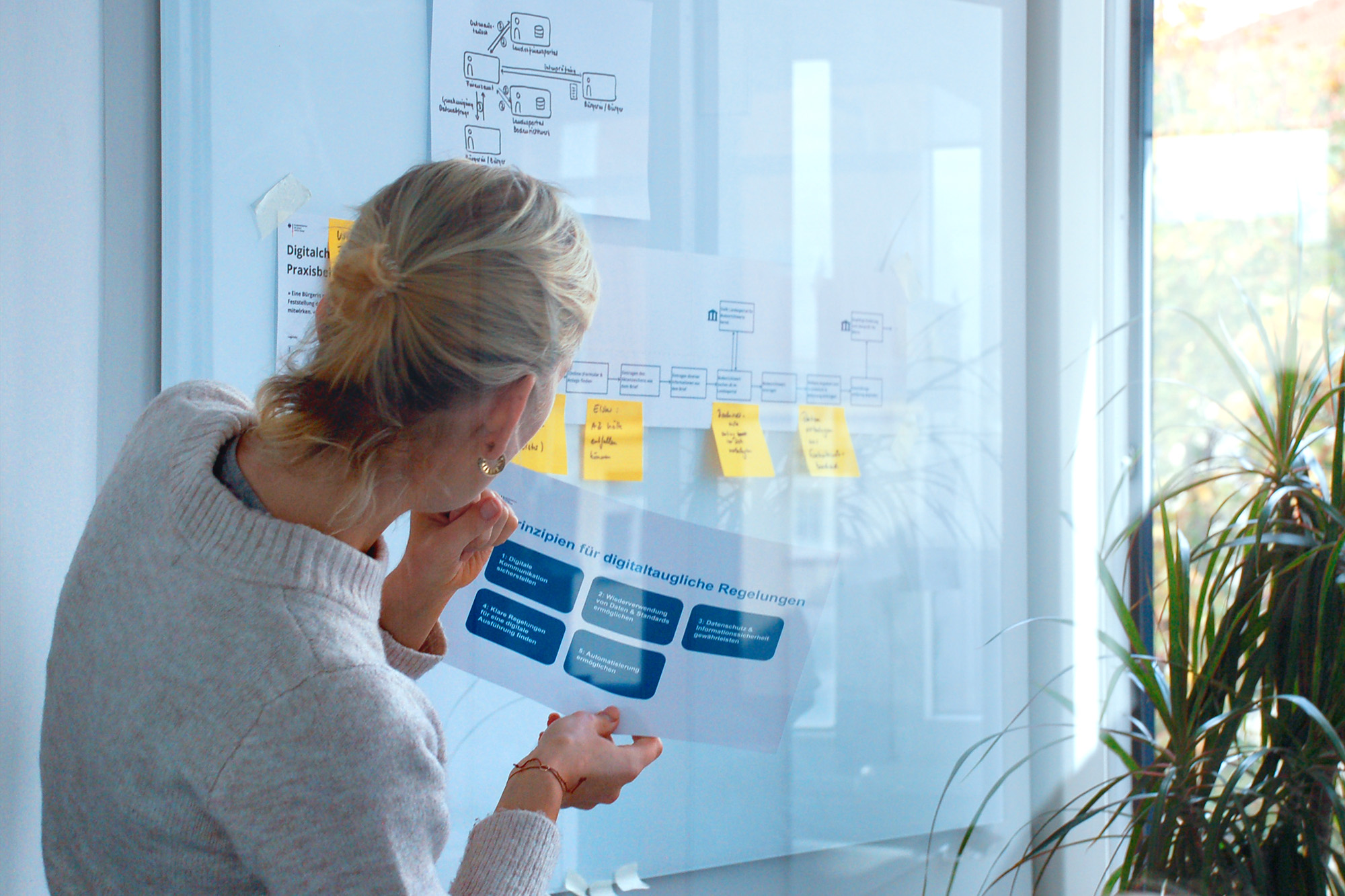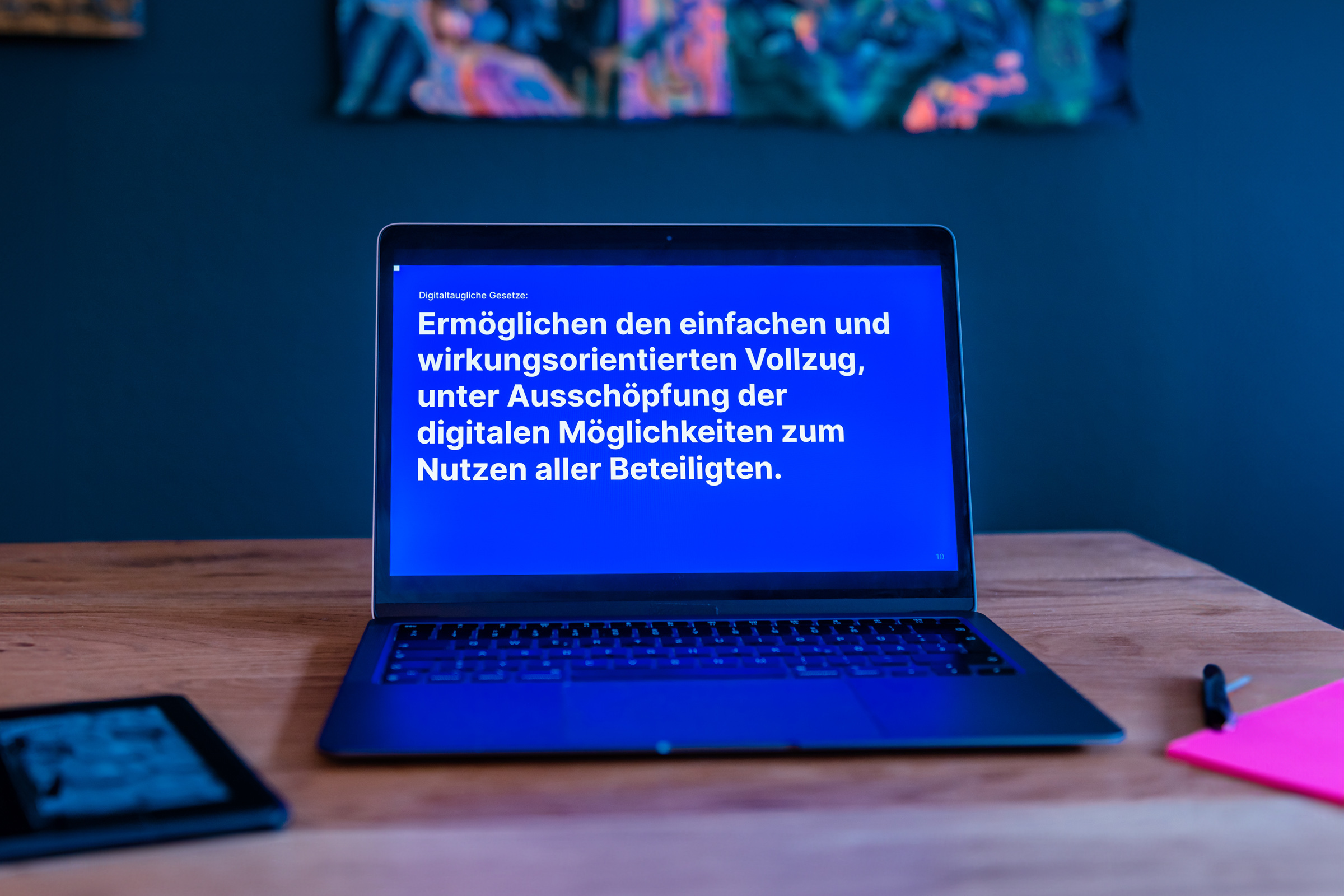
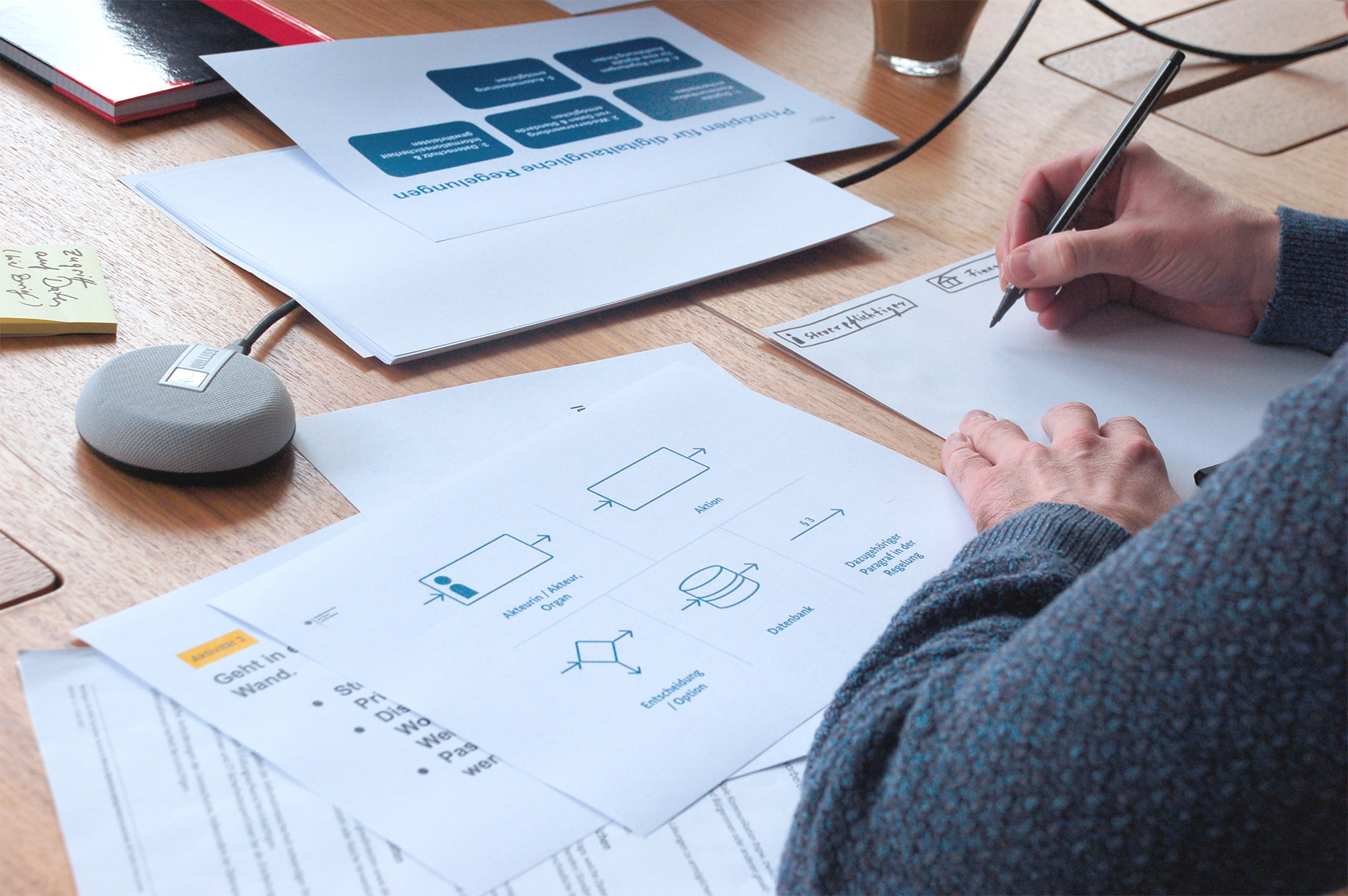
Current example of digital-ready legislation: the German Electricity Duty Act
Digital-ready legislation can help achieve an important goal of modern lawmaking: simplifying processes through digitalization and removing bureaucratic hurdles. A prime example of a digital-ready law is the German “Act on Modernizing and Reducing Bureaucracy in Electricity and Energy Duty Legislation,” which aims to save costs, creates the framework conditions for improving digital applications, ensures that the data collected can be utilized, and streamlines implementation. As a result, the hope is that companies will benefit more quickly from the relief measures promised by the government as part of its electricity price package. To facilitate that, the Act now fulfills aspects that are key to digital readiness. The department responsible for drafting the legislation at the German Federal Ministry of Finance (BMF) worked together with a small, interdisciplinary Digitalcheck team from DigitalService to apply all the methods and tools provided by the Digitalcheck.
Background information on the Act:
The main goal is to modernize electricity and energy duty legislation, mainly by removing bureaucratic hurdles and making adjustments to reflect modern developments in e-mobility and renewable energy supply concepts. The full text of the draft act is available in German here.
Within three weeks, the BMF and DigitalService had revised the part of the legislation concerned with implementing the electricity price package in the Electricity Duty Act. The DigitalService team contributed its expertise in the areas of product management, engineering, and design. The joint objective: to help develop a digital-ready law, while giving the policy drafters the methodological competence to continually apply the same approach in their future regulatory work. This blog post explains how we specifically went about this.
First step: on-site user research
Before writing a law, we need to know who it’s for and who’s involved in its implementation. The new Electricity Duty Act will be implemented by the Central Customs Authority (GZD) and thus primarily by the main customs offices (HZÄ) distributed across Germany.
With that in mind, we visited the customs offices to understand how they process incoming applications. There, we conducted eight expert interviews with all the parties involved: from the mailroom and administrative assistants to team leaders and office managers. We observed their daily work routine and together examined the requirements, frequent sources of errors in applications, specialized procedures, Excel tools, and the software architecture.
These measures gave us the insights we needed in terms of the application process and the processing workflow. The discussions also allowed us to “indirectly” gain an awareness of the needs of the applicant companies because some of the administrative assistants had been overseeing certain areas for many years.
We conducted this user research together with two policy drafters from the BMF’s legislative department, which helped us on an interpretative level. We prepared our findings from that day in the form of two visualizations: an “IT system map” containing existing and future specialized procedures and an “overview of hurdles” along the application process. Our findings also helped us better appreciate existing overviews of challenges faced by the Central Customs Authority and BMF.
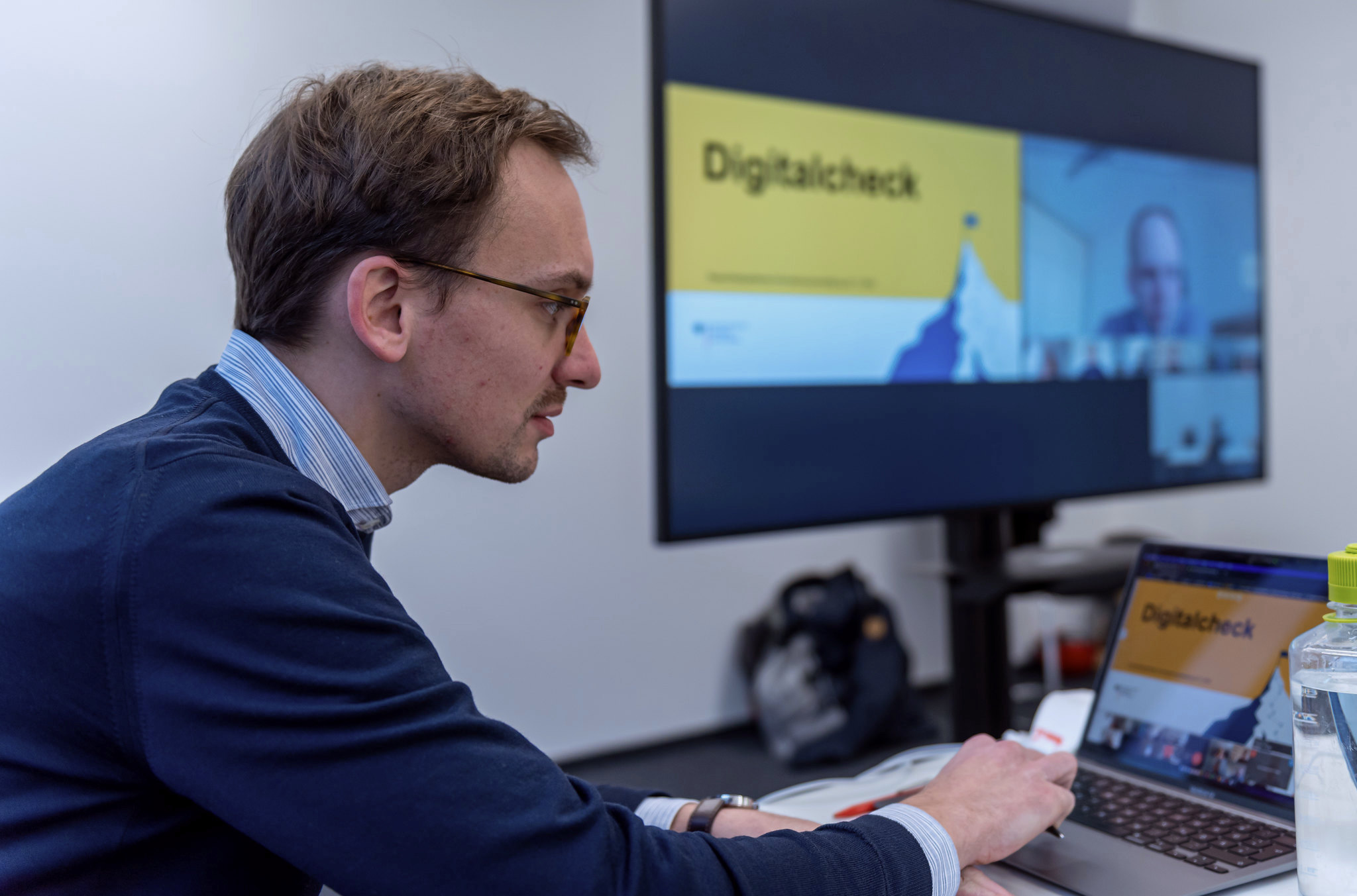
Digitalization to significantly ease the workload
A key finding from our user research was that employees at the main customs offices are putting a lot of work into keeping the current system running. Up to now, most applications have been received in paper form multiple times and with errors, leading to lots of manual steps that are time-consuming and not relevant to the evaluation process. The main customs offices expect to see the application volume increase from 33,000 to 660,000 cases due to the amendments to Section 9b of the Electricity Duty Act, so they require digital measures that significantly ease the workload instead of simply making the process electronic.
Our research allowed us to respond early to improve the digitalization of applications: A decision was made to introduce an online application requirement – two years earlier than originally planned. That will enable employees to directly process the new (up to 660,000) cases digitally rather than spending their time copying over completed paper applications. Furthermore, it will be possible to gradually automate repetitive review steps, which will give employees even more time for their important review work. Without these measures, it would be impossible to process cases in a reasonable timeframe – the main customs offices would be completely overstretched.
This highlights how the early consideration of digital implementation can ultimately lead to a solution that can significantly ease the workload. This result was only possible because the main customs offices were involved in the process at an early stage to develop digital solutions together.
In addition to these specific changes on the legislative level, we gained further insights into a potential optimization of the overall process, UI/UX challenges in specialized procedures, and general performance problems – from which we developed an improvement plan.
Five principles facilitate communication with various stakeholders
Assisted by these insights, we worked together with the BMF’s policy drafters and the stakeholders involved in implementation at the Central Customs Authority to further formulate the Act. From a communication perspective, we incorporated the “Five principles for digital-ready legislation,” which we had defined in cooperation with the German Federal Ministry of the Interior and Community (BMI), the National Regulatory Control Council (NKR), and an interministerial working group in the context of the Digitalcheck. On that basis, we discussed visualizations, for example by asking: “What do we need to do to facilitate partial or full automation?” (principle 5). The principles ensured a common understanding throughout the process, also when communicating with executives and other authorities.
The five principles for digital-ready legislation are reflected in the formulation of the Electricity Duty Act as follows:
- Principle 1: Digital communication is ensured. The energy and electricity duty forms are based on IT standards and standardized development tools and are designed so that they can be completely executed in a digital format.
- Principle 2: The Act lays the foundations for re-using data and standards. By providing definitions of terms, establishing clear pre-conditions, and referencing entries in the market master data register, data standards are defined that can be consistently reproduced in forms, both on a functional and content-related level.
- Principle 3: Data privacy and information security are ensured.
- Principle 4: Clear rules are set for digital implementation. The draft act lays the foundations for electronic data exchange. Retention requirements are introduced rather than submission requirements.
- Principle 5: An automated application process is made possible. The legislation contains defined and harmonized legal terms that can be consistently reflected in forms, paving the way for a uniform digital application filing and processing procedure.
Visualizations make drafting legislation easier to grasp
In their Digitalcheck work, DigitalService, the BMI, and the National Regulatory Control Council repeatedly emphasize the relevance of visualizations in the context of digital-ready legislation. We took an in-depth look at the added value of visualizations in our article “Using visualization to create digital-ready legislation.” In simple terms, visualizations help policy drafters structure complex processes so they can be understood and discussed more quickly and intuitively. For example, visualizing processes quickly highlights any logical inconsistencies in a law.
When drafting the German Act on Modernizing and Reducing Bureaucracy in Electricity and Energy Duty Legislation, we used the following visualizations:
- Rule map: A rule map was created to outline the existing legislative text and the logic behind it.
- Data flowcharts: These helped us identify possible data sources and understand what data can be found where.
- Workflows: These enabled us to assess the processing procedure to identify possibilities for partial or full automation, any media discontinuities, and other obstacles. They also made the link between the text and implementation transparent for everyone involved.
- System diagram: This was an effective way to map IT systems and thus align a common understanding with the implementation level and provide clarity in terms of which specialized procedure or system could lead to an “acceleration” and how.
Working with visualizations is a new concept for many policy drafters. Our service designer helped them get to grips with the methodology – an important step toward embedding visualizations in administrative services.
We are particularly delighted that the resulting visualizations were ultimately even integrated into the draft act on pages 134–136. This is a testament to the transparency and comprehensibility of the new legislation. Some of these visualizations also form part of the draft act presented to parliament, and the added value described above may also be beneficial here.
Project partner from the Federal Ministry of Finance
The thorough analysis of implementation processes helped us better understand the interplay between the legislation and administration and consequently design a digital implementation strategy. The collaboration with the DigitalService team was intensive, but ultimately saved us a lot of time for further discussions.
Conclusion: complex but worthwhile
The intensive guidance provided by the interdisciplinary team of experts presented the policy drafters with unfamiliar approaches and some new methodologies. However, the collaboration was successful on the whole, and the Digitalcheck provided the foundations for the Act to …
- … simplify the application process by removing unnecessarily complex links with regard to offsetting, bringing the online application requirement forward by two years, and extensively automating the processing of applications. Only by creating these legal framework conditions will it be possible to handle the expected increase in the application volume (30,000 → 660,000) and thus effectively realize the electricity price package promised by the government. It would have otherwise been impossible to process cases in a reasonable timeframe.
- … effectively reduce bureaucratic costs: The established framework conditions are expected to generate significant savings for the economy amounting to approximately 15.4 million euros per year. Source: total implementation costs – estimate provided in the draft act.
- … empower policy drafters on a lasting basis: The department went on to use visualizations to develop and implement a subsequent regulatory project.
These are initial improvements on the path toward modernizing and reducing bureaucracy in electricity and energy duty legislation. The important step now is to measure and evaluate the impact of the measures in practice so that further amendments can be adapted accordingly.
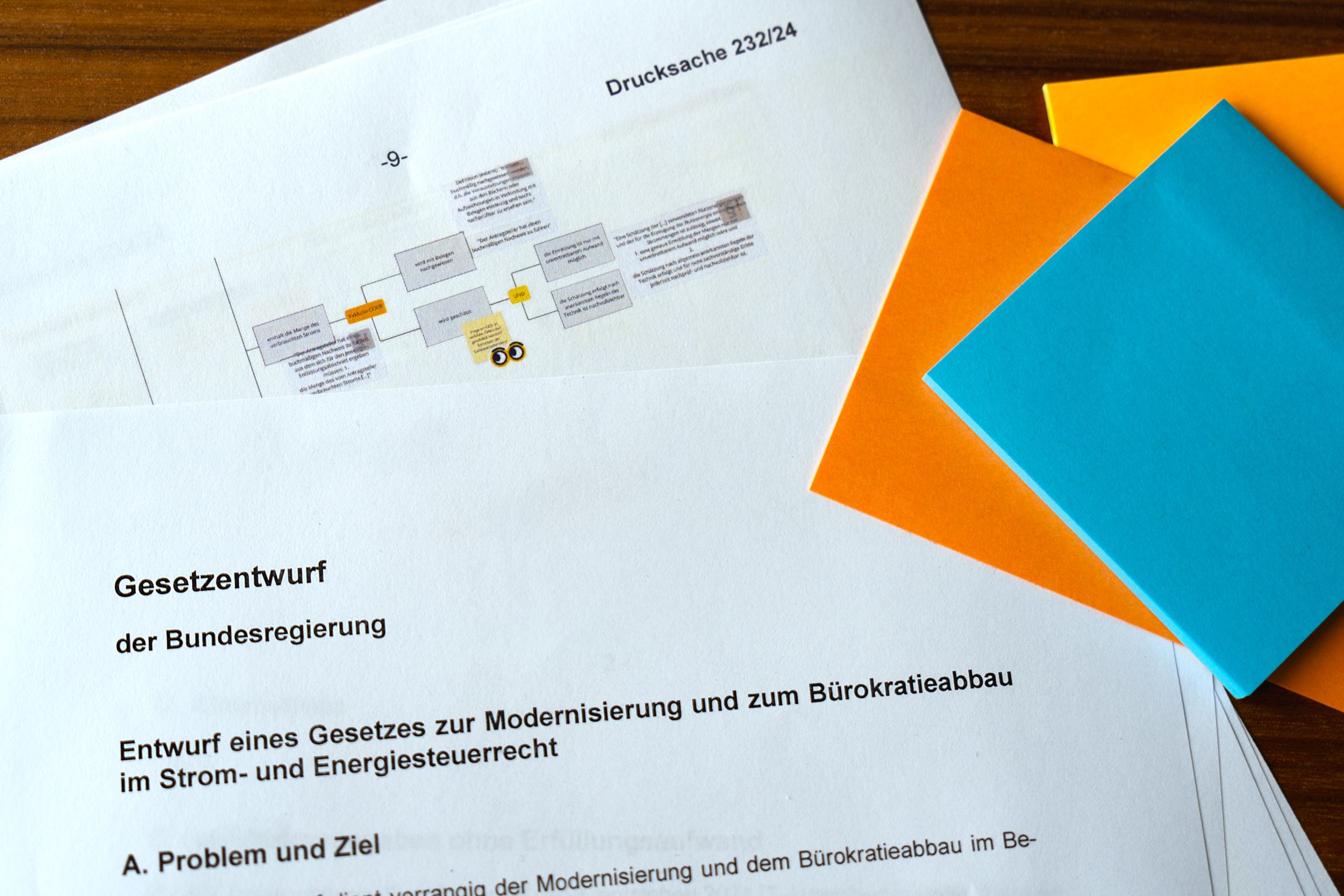
On-site digital expertise is the key
The interplay between the various stakeholders and their responses highlight that providing digital expertise as early as the legislative drafting stage has a positive impact. This reinforces the objective behind the Digitalcheck: implementing a holistic approach to embed digital expertise and suitable methods and tools right from the start of legislative processes.
The format of intensive guidance also shows that on-site support from digital experts pays off. Simply providing instructions for new ways of working is not always enough; teams with expertise in IT, data, user research, and design are required so that questions can be clarified quickly. Only then can knowledge be transferred and utilized.
We hope to apply this learning effect to a greater extent in the context of federal public administration and aim to explore how we can provide this form of support at the right time to boost the number of regulatory projects. To that end, in the second half of 2024, we’re planning to develop new support measures (for example to communicate technical content) and closely oversee two more regulatory projects together with an interdisciplinary team over the course of several weeks with a clear focus on ensuring digital readiness. If you’re interested, please don’t hesitate to get in touch by e-mailing digitalcheck@digitalservice.bund.de. We can also offer ad-hoc advice or a quick assessment of the digital needs of your regulatory project over the phone (+49 151 40767839) or by e-mail.
Read more on the topic

